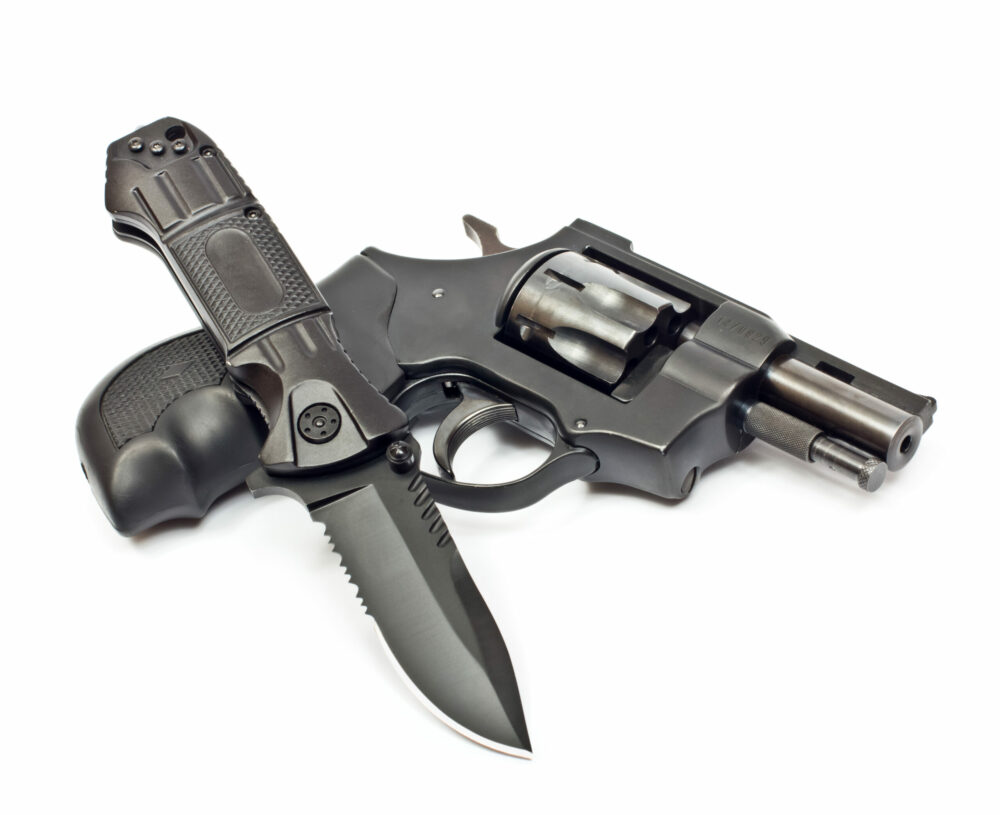With the recent rise in mass shootings in America and with an average of 327 people being shot in the U.S. every day, schools, institutions of higher education, and healthcare facilities are working hard to keep weapons of all kinds off their campuses. Many have adopted various types of weapons detection technologies to screen for guns, knives, bombs, and other objects that could be used by a person to hurt other people or themselves.
In response to this emerging trend, Campus Safety asked K-12, college, and hospital security directors, police chiefs, and other administrators responsible for safety at their organizations to participate in the inaugural Campus Safety Weapons, Metal, and Gunshot Detection Survey. More than 200 protection professionals participated and answered questions on everything from the types of systems they use, where they deploy their weapons detection technology, how often they use it, the challenges they’ve experienced with the technology and more.
Read on to see the results. To read the full report that includes the charts, click here.
Campuses Most Often Use Walk-Through and Hand-Held Weapons Detection Systems
By far the most popular type of weapons detection system used by survey participants is “Weapons/metal detection using sensors in walk-through or hand-held detectors.” Nearly two in three participants (63%) said they use this type of technology. At 74%, hospitals and institutions of higher education are the campuses that use this type of system the most, compared to 55% of K-12 campuses.
Weapons detection systems using video are the second most popular type of weapons screening solution adopted by respondents (21%). However, at 30% and 24% respectively, hospitals and K-12 schools have embraced this type of technology much more than colleges and universities (12%).
More than one in ten survey participants (11%) said their organizations own, borrow, or rent a gunshot detection system. At 14%, twice as many K-12 respondents than higher education and hospital respondents (7%) said they use this type of solution. X-ray machines are the least popular weapons screening system adopted. Only 6% of all survey participants said they have or use this equipment.
Aggression sensors, K9s, and vape detectors were some of the “other” systems adopted by survey participants. More than one in five participants (21%) said they have no weapons screening system in place.
1 in 3 Survey Takers Are Proactive in Their Equipment Purchases
Nearly two out of five (39%) of respondents said they’ve acquired weapons/metal detection using sensors in walk-through or hand-held detectors in the past two years, and more than one in three (36%) are considering buying this type of system in the next couple of years. At 25%, weapons detection systems using video were the second most popular weapons screening solutions purchased in the past two years by survey participants. Additionally, 32% of respondents are considering buying this equipment in the next two years.
Gunshot detection systems were acquired by 18% of respondents over the past two years, and 19% are considering buying this solution in the next two years. X-ray machine purchases bring up the rear with only 10% buying this equipment in the past two years and 9% considering buying it by 2026.
As for why schools, universities, and hospitals are acquiring weapons detection systems, there is some good news, as well as some bad news. The good news is that a significant percentage of survey participants are being proactive and are tracking the trends happening in other parts of the nation to determine if they need to make purchases or upgrades.
Nearly one in three respondents (30%) said, “Nothing in particular. We just want to improve safety and security on campus” was a reason for their recent purchase of a weapons detection solution. When broken down by sector type, colleges, universities, and hospitals were the most proactive, with 34% indicating this was a motive for their organizations. K-12 respondents were six percentage points behind their higher ed and healthcare brethren at 28%.
Additionally, 24% of all respondents said recent incident(s) that happened in other parts of the country was their motivation. With this question, higher ed and healthcare survey participants indicated their organizations were, once again, more proactive than K-12 schools and school districts (30% compared to only 17%).
And now for the bad news: 28% of all survey takers said, “We need to adopt weapons detection or upgrade what we have, but we are not taking steps to do so.” At 30%, K-12 and higher education respondents were the most likely to mark this option, compared to only 14% of hospital respondents.
Where Do Schools, Colleges, and Hospitals Deploy Metal Detectors?
Although 39% of all respondents said their weapons or metal detection equipment is deployed at some entrances, when broken down by sector type, the responses vary greatly. At 48%, healthcare respondents were the most likely to say their metal detection machines are deployed at some entrances, compared to 44% of K-12 survey takers and only 26% of college and university respondents. Only 11% of all respondents said they deploy weapons screening at all of their entrances.
For equipment deployed in arenas and stadiums, the responses also varied by campus type. Forty three percent of college respondents said they deploy weapons detection at these venues, compared to only 21% of K-12 schools and school districts.
Six in 10 hospital survey takers said they deploy weapons detectors in their emergency departments. Other deployment locations for all types of campuses include commencement, discipline office, special events, and parking areas.
Related Article: 7 Signs a Weapon Is Being Concealed
Overall, at 68%, guns and firearms are the threat objects respondents most often screen for, but, again, when broken down by sector type, there are significant differences. Nearly three out of four college and hospital respondents (73%) said their equipment screens for guns and firearms, compared to 63% of K-12 school and school district survey takers. Sixty two percent of institutions of higher education and hospitals screen for knives, compared to only 35% of K-12 campuses or districts.
The same difference in responses applies to screening for other weapons or materials that can be used as weapons: 39% of college and healthcare respondents said their organizations screen for these compared to only 18% of schools and school districts. Additionally, more colleges and hospitals than K-12 schools screen for bombs: 23% and 10% respectively.
One in five respondents said they don’t screen for weapons at all.
Nearly half of all respondents (49%) who have some type of weapons or metal detection equipment use it daily. At more than 80%, however, hospitals are the respondents most likely to use this technology every day, compared to only 45% of K-12 and 24% of college and university respondents.
One in four of all survey takers (25%) said they use their equipment only at special events or when there is an elevated risk (18%) or randomly (7%). One in five respondents said they never use their equipment.
Staffing Is the Biggest Challenge to Effective Campus Weapons Screening
Nearly three out of five (59%) of all participants said they are very satisfied or somewhat satisfied with their weapons detection systems. When broken down by sector, 77% of hospital respondents said they were very or somewhat satisfied with their solutions, compared to 59% of higher education respondents and 51% of K-12 respondents.
However, equipment and usage issues persist. By far the biggest challenge respondents said they experience with their weapons detection systems is staffing. Nearly one in three survey participants (32%) said they frequently or constantly don’t have enough personnel to run their equipment effectively. This isn’t surprising considering the current labor shortage.
Related Article: How to Get Pay Raises for Your Public Safety Department Officers
“Ineffective access control in the rest of the building allows people to circumvent the weapons-screening process” is the second most significant challenge for survey takers: 23% said they frequently or constantly experience this problem.
More than one in five (21%) participants said their systems frequently or constantly have false alarms.
“On standard settings, it will not detect knives and vapes. On high settings, it detects eye glass cases, lap top computers, keys, binders, umbrellas, metal lunch boxes, etc. All false alerts,” said one survey participant.
Related to the staffing issue is the time it takes to train security personnel on how to use the technology. Nineteen percent said they frequently or constantly don’t have enough time or resources to train staff how to use their weapons screening equipment. However, the vast majority of survey participants (74%) indicated their detection devices are user friendly.
Throughput is a challenge for some respondents, with 16% saying they frequently or constantly experience it taking too long for students, employees, patients, and visitors to be screened.
Campus Safety thanks the more than 200 school, university, and healthcare protection professionals who participated in our survey. We truly appreciate your input!
Sponsored by:
















